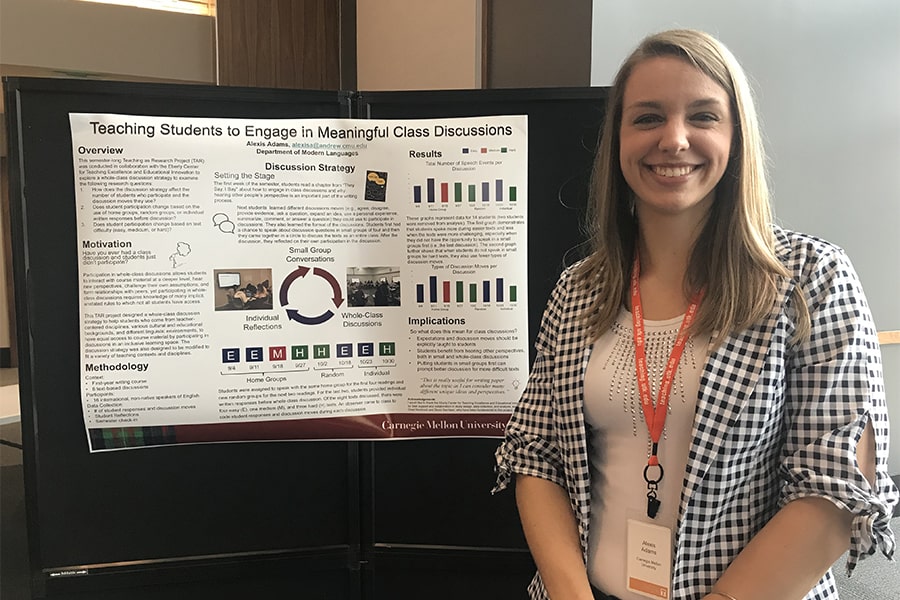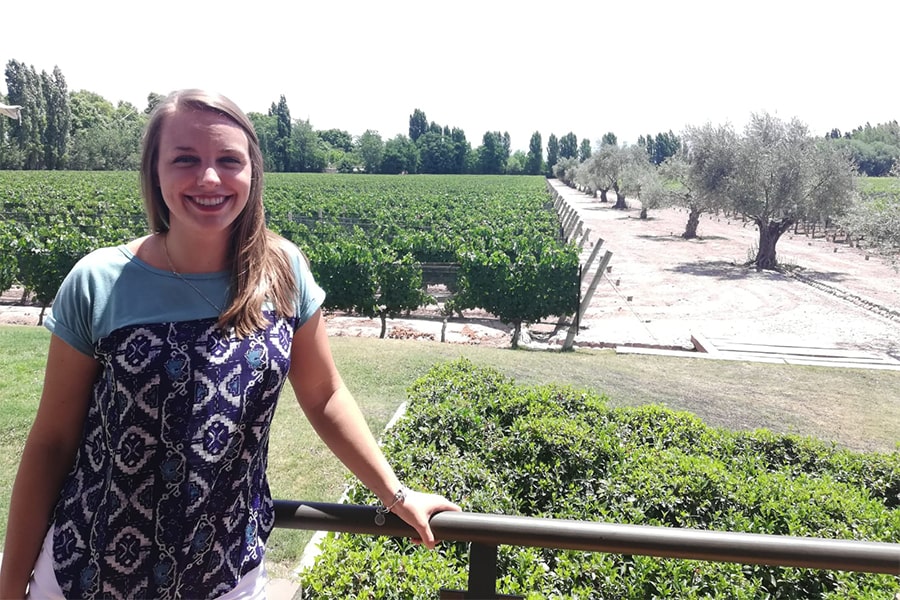
Adams Promotes Inclusivity Through Culturally Responsive Teaching
By Kelly Saavedra
Things are not always what they seem to be in the classroom. For instance, when students don’t ask questions or offer their opinions, a teacher may assume they don’t care or they came to class unprepared; however, this is often not the case.
Students, whether they are from the same country or a different country, represent a multitude of cultural, linguistic, educational, socio-economic, racial, gender and other backgrounds. These backgrounds influence how they have learned to be a student. For example, while students in the United States are often expected to actively participate in class, in other contexts, students may be expected to listen to a lecture without having the opportunity or expectation to participate.
Lexi Adams, a teaching consultant in Carnegie Mellon University’s Eberly Center, knows that recognizing, valuing and responding to students’ cultural differences is essential to creating a classroom where all students feel included and have equitable opportunities to learn and express their knowledge.
This involves not only teaching students about all cultures but also how an instructor teaches.
Adams explains that because of students’ differences, “Students benefit when teachers are transparent. Regarding class participation, instructors should explain why discussions are important. It also helps to teach students how to participate — who can speak, when and for how long,” she said. By doing so, instructors explicitly highlight and clarify differences, rather than assuming students will know what to do.
In addition, Adams also recommends that instructors carefully consider the format of the class to ensure students have different ways to engage and demonstrate their knowledge.
“Students learn in different ways, and teachers need to recognize and respond to that. For example, verbal participation doesn’t always work for everyone, especially in front of the whole class, so what is another way students can participate? Instructors could create small group activities, which tend to be more encouraging for students; individual activities; or non-verbal options, such as a discussion board or a reflection after class,” she said.
"We often don’t know something is un-inclusive until someone points it out."
Adams supports the diverse group of international and multilingual students at Carnegie Mellon by collaborating with faculty and graduate student instructors across the university’s Pittsburgh, Qatar and Africa campuses. She provides instructors with confidential, individual consultations that include course design and assessment practices. She also creates and conducts workshops, seminars and presentations on a variety of teaching and learning topics, mostly centered on integrating diversity, equity and inclusion in the classroom.
Adams joined the Eberly Center in 2018 as a Graduate Teaching Fellow, transitioned to a postdoctoral teaching consultant two years later after completing a doctorate in Second Language Acquisition at CMU, and now works full-time as a teaching consultant.
In addition to working at the Eberly Center, she has taught a variety of courses in Spanish, English as a Second Language, first-year writing and pedagogy for university and pre-K through 12 students in the United States, South America and the Middle East.
In 2020, she received the Graduate Student Teaching Award and the Dietrich College Graduate Student Teaching Award.

Fueled by a passion for teaching Spanish and English as a Second Language, Adams studied abroad — an invaluable experience she recommends for everyone — and has lived and taught in Peru, Ecuador and Argentina. The photograph of her above was taken in front of the vineyard in Mendoza, Argentina, where she lived for half a year and visited annually during winter break before the pandemic. She has visited Costa Rica, Panama, Puerto Rico, Colombia, Chile, Paraguay, Qatar, United Arab Emirates and Oman.
“Multilingual students offer so much!” she said. “Their perspectives, experiences and knowledge are vital to the classroom and help us all learn new ways of thinking and seeing the world.”
But multilingual students face many challenges. In addition to learning to communicate through a new language, Adams says many are learning how to navigate new social norms, classrooms and the university at large. The difficulties go beyond just vocabulary and grammar issues.
“Students from some countries may not know what office hours are, or that it is okay and expected to go to office hours and ask questions. Some cultures and language value listening, while others value interrupting to show interest. In some languages, giving criticism is direct, while in others it is subtle and indirect,” she said. “Speaking as someone who studied abroad while speaking a second language, it is not as easy as what they teach from a textbook.”
"Students need to feel they are in a safe and welcoming environment in order to truly engage and learn."
From South America to the Middle East, she has encountered many differences teaching, but she has also found that students of all cultures share one important similarity.
“Students need to feel they are in a safe and welcoming environment in order to truly engage and learn,” she said.
Adams says culturally responsive teaching takes time and constant reflection. Faculty and staff can engage by reflecting on their own experiences, learning more about culturally responsive teaching strategies and listening to other people’s experiences.
“We often don’t know something is un-inclusive until someone points it out,” she said.
Her final thought on the matter — be kind. “We are all learning new things each day,” she said. “Be patient and kind with others.”
For more information about the support available to faculty and graduate student instructors, visit the Eberly Center website.
